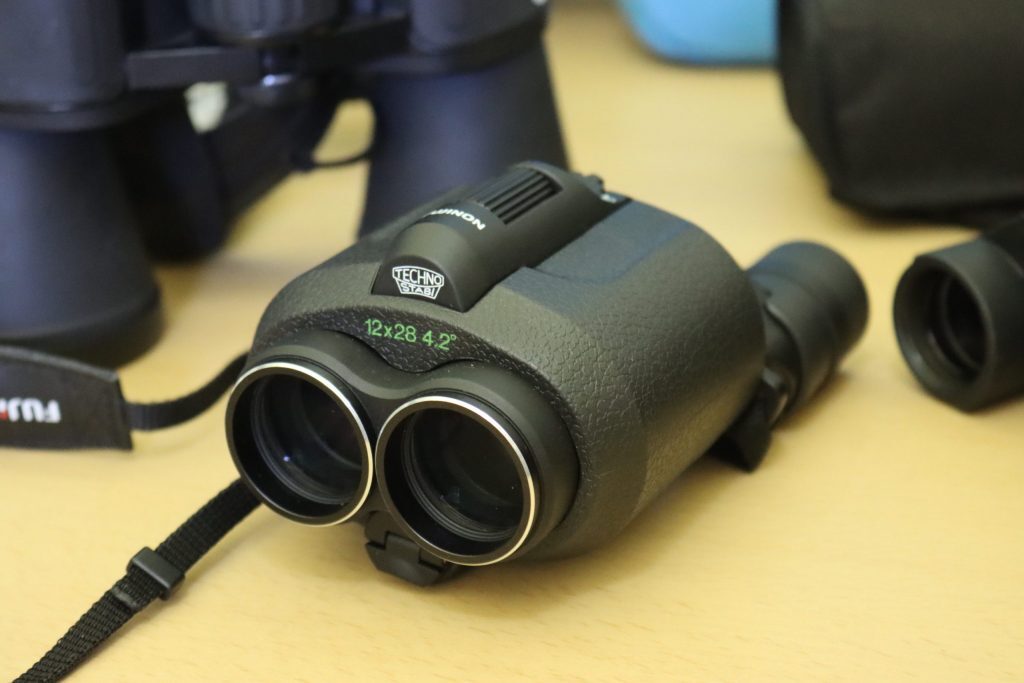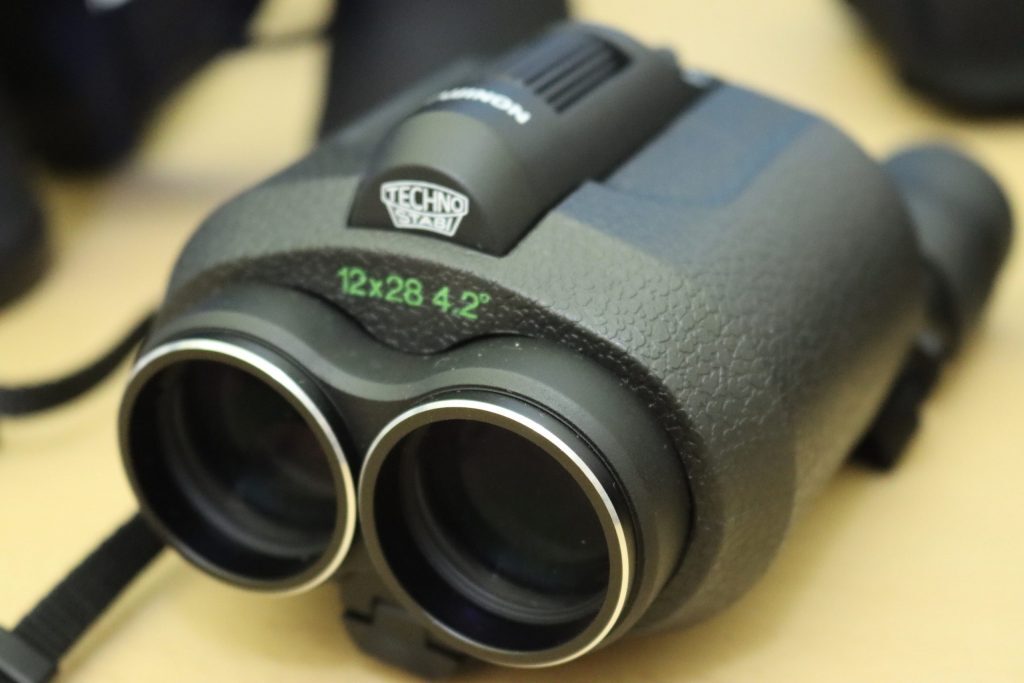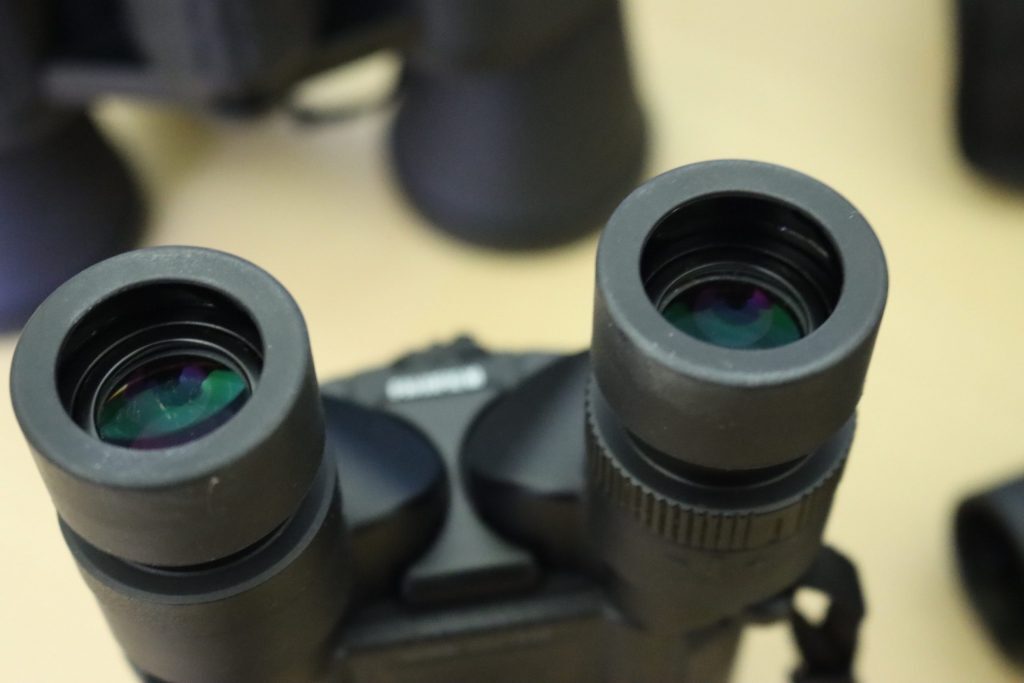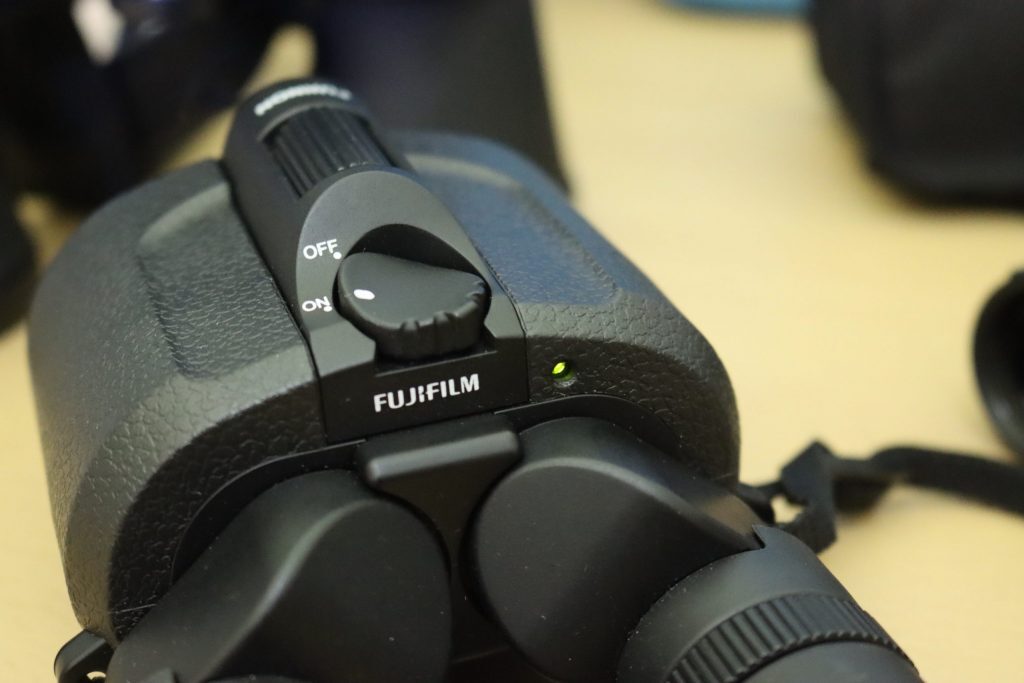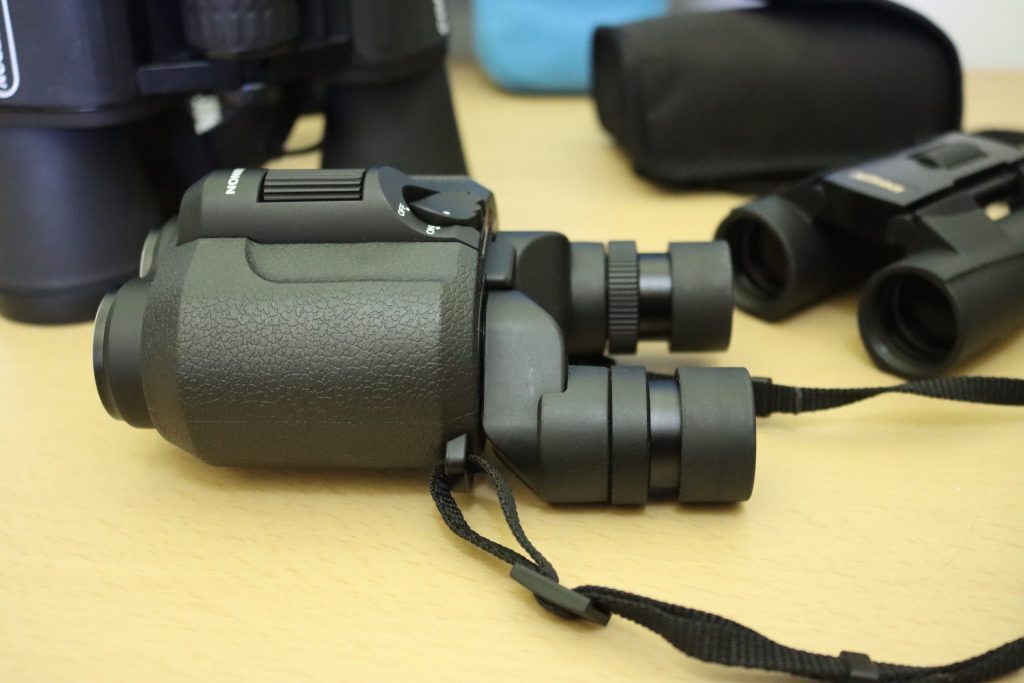If you've been thinking about taking up birdwatching, these will elevate your game immediately. Their compact size, relatively low weight and ease of use can't be understated -- plus, it's fantastic to keep your eyes on your target without needing to lie prone or use a rest for your elbows. Worth the money.
-
Comfort
-
Lens quality
-
Stabilisation
-
Price
-
Versatility
Some of us here at Stuff have a weakness for expensive glass. And while Fuji’s Techno-Stabi 12×28 stabilised binoculars don’t really climb the scale all the way up to expensive, at just under R10,500 it is a fair amount to ask for a set of bins with 28mm objective lenses.
But, if you’ve been paying attention, there’s that word ‘stabilised’ in there that makes all the difference. Yes, you can drop R1,500 to R3,000 on a decent set of 10×25 binoculars for birdwatching but that’s all you’re going to use them for. They’re too small to work at night and too cramped for anything requiring lengthier observation. If you have the money for them, the Techno-Stabi 12x28s should be on your wildlife/bird-watching/astronomy wish list.
Weird looking critter
Fuji’s Techno-Stabi 12x28s are… a little strange looking, especially if you’re used to more traditional designs. There’s a compact main body, just large enough to cup both your hands comfortably over, with both of the 28mm objective lenses sitting closely together up front.
The controls — the focuser and the switch to turn stabilisation on — are in a straight line along the top of the binoculars, while the eyepieces look out of place on moveable stalks. Each eyepiece has an adjustable eyecup, each able to soft-lock at pre-set heights, and the right eyepiece also has an adjustable diopter setting — at least that’s where you expect it to be.
It looks like something from a Splinter Cell game or a James Bond film — the kind of high-tech gadget you’d use to save your life in the wilderness. Alas, we just used it to check out a few birds, animals and stars. Okay, and maybe a few people far, far away (which is how you’re supposed to interact with other people these days).
Zooming in on it
Unlike much of the other tech that we get to play with here at Stuff, there’s not too much to Fuji’s binoculars. There’s a single switch, a battery port (which takes a lone CR2 battery) and a place to look through. But anyone who’s used binoculars and other optics will tell you, it’s all about how you look through it. These will replace at least a few month’s worth of experience and if you’ve already got the experience… well, you’re in for a good time.
Peer through the Techno-Stabi 12x28s and you’ll see clear, bright images in daylight. Focusing is simple and accurate, once you’ve tuned the diopter for your right eye, and there’s no evidence of chromatic aberration through these. But, as with any 12x set of binoculars (anything past 10x, really), the view jags and darts around, unless you’re resting your elbows on a solid surface or you really know what you’re doing while standing upright.
Until you flip the switch to the On position, anyway. The Techno-Stabi’s internal bits engage with a perceptible ‘thunk’ and the view smooths out to, at most, a very gentle sway. If you’re already fairly stable, you’ve got a rock-steady view of your target. And that can make up for a lot.
Best use cases
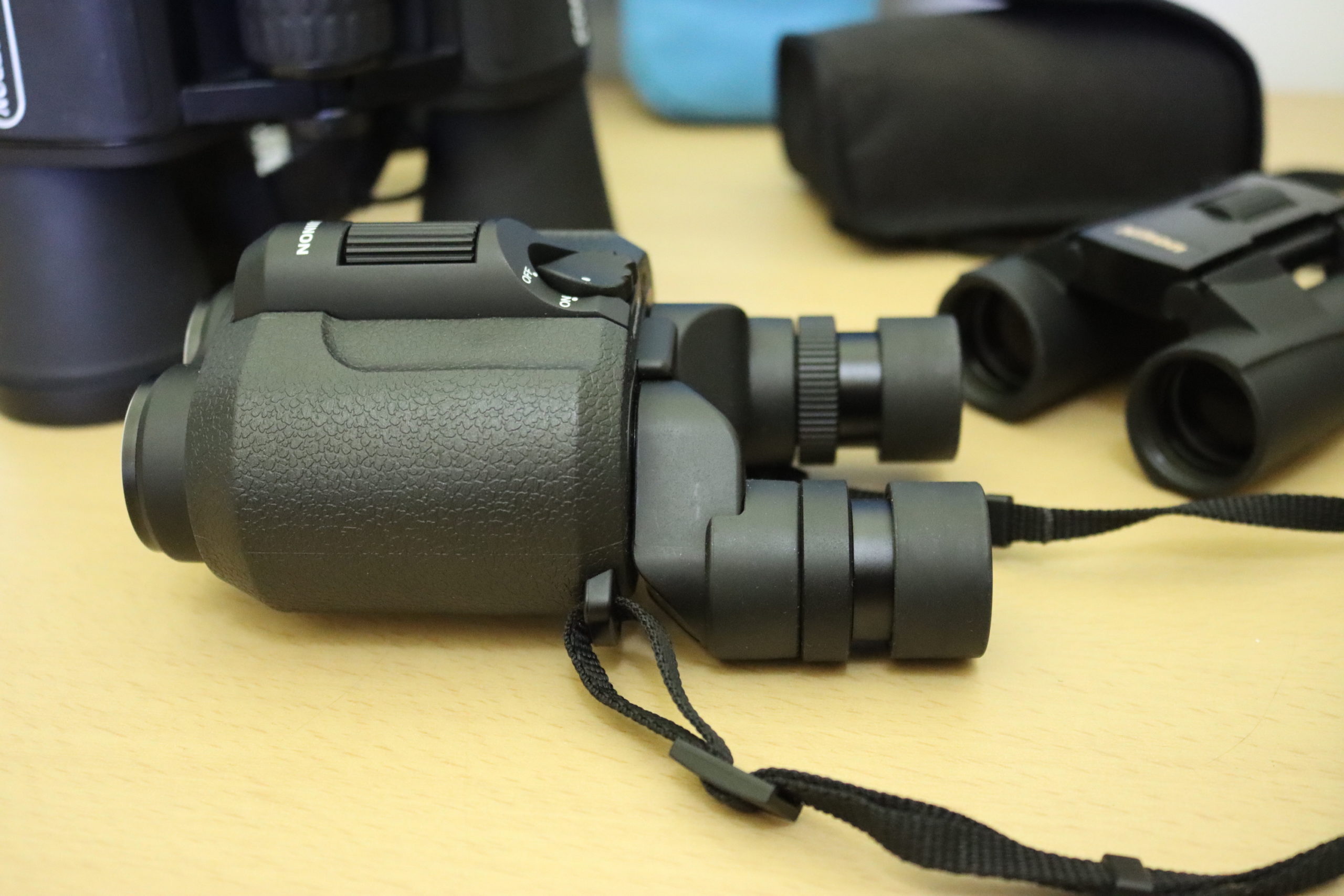 We used these in a variety of scenarios, mostly to look at visiting birds in the garden or butterflies fluttering in the distance. It’s incredibly easy to get lost in tracking your targets, because you’re not doing as much compensating with your back and shoulders. That equals longer, more immersive views.
We used these in a variety of scenarios, mostly to look at visiting birds in the garden or butterflies fluttering in the distance. It’s incredibly easy to get lost in tracking your targets, because you’re not doing as much compensating with your back and shoulders. That equals longer, more immersive views.
But that was in broad daylight. We also took these for a drive at night, to check out the skies around Johannesburg (which are a Bortle 7, unless large chunks of the city are load shedding). Usually you don’t want to use anything with an objective lens smaller than 42mm, with 50mm being preferred for astronomy purposes. A larger objective equals more light gathering, especially out in the city. But a stabilised image makes up for a lot.
Stacking these against a pair of 7×50 Celestron binoculars, as well as a 10×25 Nikon pair, Fuji’s bins lose out to the larger pair in terms of brightness. That’s to be expected. But the Techno-Stabi 12x28s are surprisingly clear, considering their light gathering capability. Clear enough to pick out detail on the crescent moon, and also clear enough to get a sense of the star field behind Orion’s Belt. Even better, it’s possible to make out a few points of the Trapezium inside the Orion Nebula (M42). You won’t get all four of them but you should resolve at least two and possibly three points. That’s hugely impressive for binoculars this size.
Fujinon Techno-Stabi 12×28 Verdict
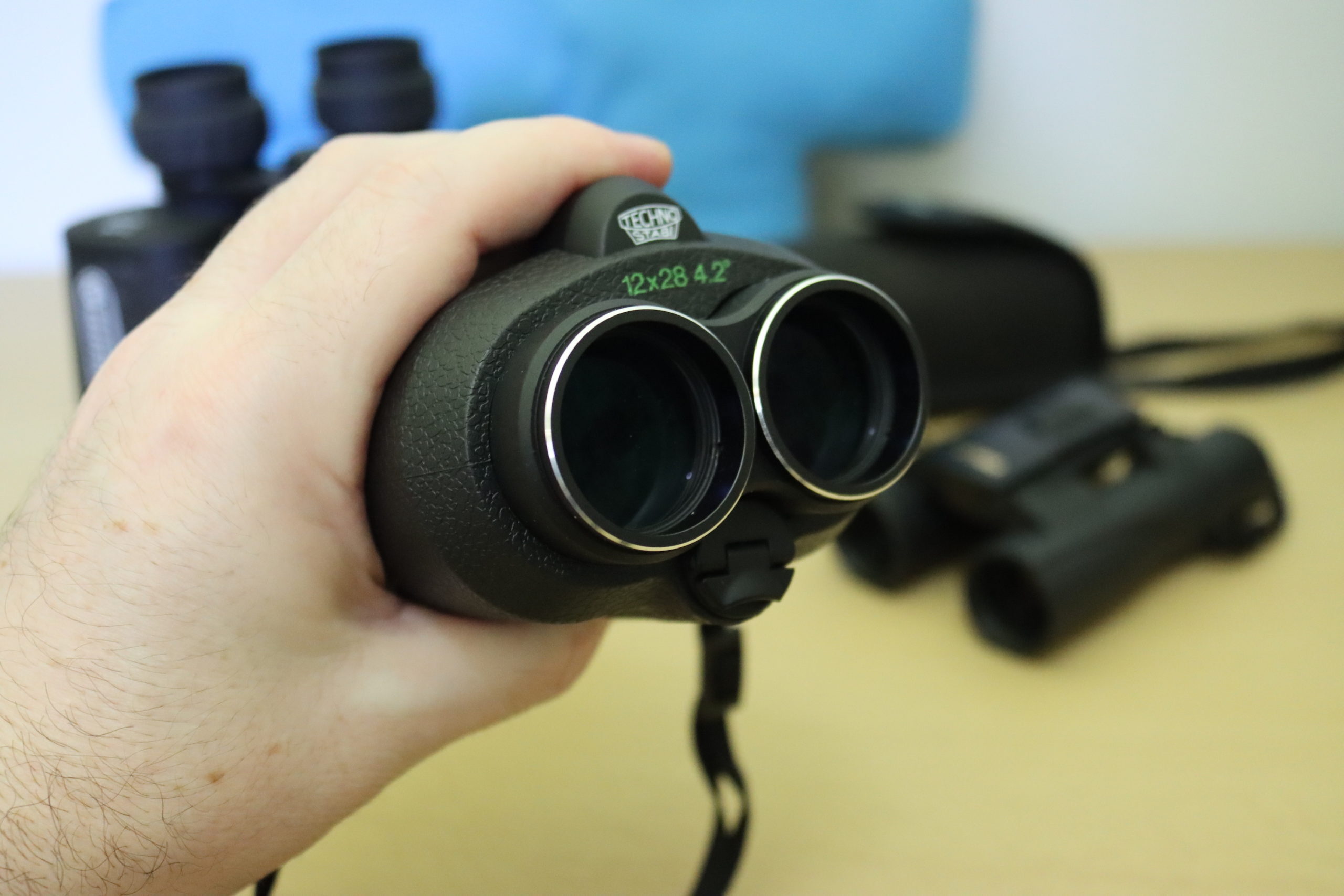 You might question whether it’s worth it spending in excess of R10,000 for a glorified set of bird-watching binoculars. But then, you haven’t held Fuji’s 10x28s in your hand, bouncing from bird to bird because you forgot that your eyes still function in the normal way. And you haven’t pointed these at the skies to find some of the prettier astronomy targets (the skies are lovely this time of year) and marvelled at how little your forearms hurt. Stabilised binoculars might be considered cheating by some, but that’s fine. Sometimes you just want an excellent experience without all that effort and that’s just what Fuji’s Techno-Stabi 12×28 binoculars provide.
You might question whether it’s worth it spending in excess of R10,000 for a glorified set of bird-watching binoculars. But then, you haven’t held Fuji’s 10x28s in your hand, bouncing from bird to bird because you forgot that your eyes still function in the normal way. And you haven’t pointed these at the skies to find some of the prettier astronomy targets (the skies are lovely this time of year) and marvelled at how little your forearms hurt. Stabilised binoculars might be considered cheating by some, but that’s fine. Sometimes you just want an excellent experience without all that effort and that’s just what Fuji’s Techno-Stabi 12×28 binoculars provide.

